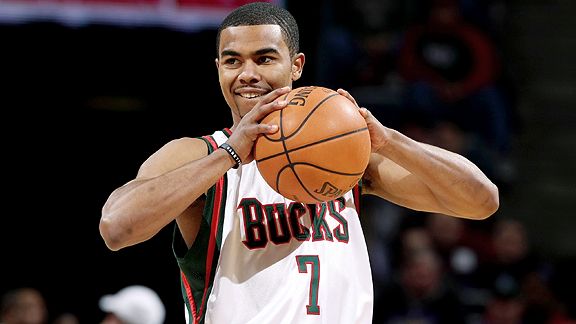
Ramon looking pleased during his first stint as a Buck; wearing #7, before Ersan wore #7, but after Ersan wore #19. Now Ramon wears #13, after Luke Ridnour had been #13 for the Bucks, twice. Confused?
Immediately after last week’s trade deadline we sent out a couple tweets regarding the Bucks trade of Gary Neal and Luke Ridnour to Charlotte for Ramon Sessions and Jeff Adrien. On the surface, it was a good deal. The team dealt two players that didn’t fit, for two players that might fit better, and in the process saved $3.5 million in contract liabilities. Additionally, neither Sessions nor Adrien have guaranteed contracts for next season, so it may open up another roster spot for a new rookie moving forward.
Had this trade been made by a brand new Bucks front office we probably would have applauded it as a nice minor move, and not had much further to say. However when you put the trade into a larger multi-year context, we were struck by how the trade fit a revolving-door pattern that has been going on with the Bucks front office for many years now.
Giving an opinion on Twitter, while using only 140 characters, can be a challenging task, and a few of you let us know that you didn’t think this was our best work. The issue with our tweets was that we didn’t do a good job of laying the foundation for our thoughts on the trade as part of a larger, overall dysfunctional pattern of player asset management.
In today’s Part I we’ll look at how the Bucks roster under John Hammond has been a high-speed, revolving door of players who never seem to work out. In next week’s Part II, we will examine how much autonomy John Hammond or any Bucks General Manager has under the front office structure employed by Senator Kohl.
